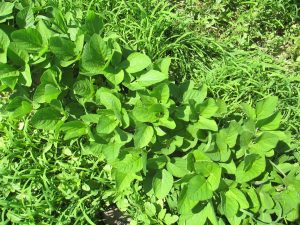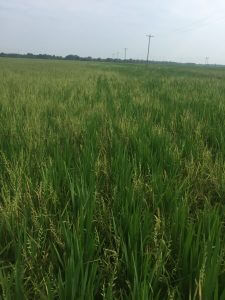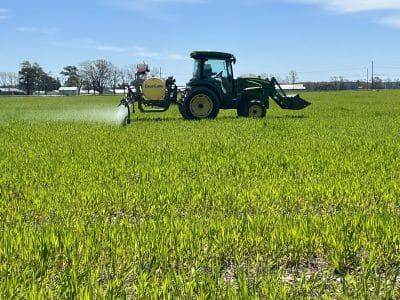Barnyardgrass is the most troublesome weed in Mississippi rice. Barnyardgrass that is allowed to survive and produce seed in soybean can cripple a rice weed control program the following year. Fewer barnyardgrass escapes means less seed production, which in turn could impact herbicide applications in next year’s rice crop.
Populations of barnyardgrass resistant to ALS herbicides (like FirstRate, Classic, and Regiment) have been identified across rice-producing areas of the Mississippi Delta. In some populations in cotton-growing regions of the south, resistance to other herbicides including groups 1, 4, 5, 7, and 26 have also been confirmed.
In corn, cotton, and soybean, most barnyardgrass control programs are glyphosate-based. Relying on one weed control method leaves room for error if not applied properly, as well as increases the chances of resistance development. Integrated weed management is necessary for successful management of barnyardgrass, even with effective herbicides.
First, applications should be timed so that they target barnyardgrass when it is young, only a few inches tall. Fields should be scouted ~14 days following application to check for new weed emergence so that the weeds do not grow too tall to control.
In the Roundup Ready age, a rice-soybean rotation has been helpful for managing barnyardgrass in the Mississippi Delta. However, the effectiveness of this rotation to control weeds relies on the weed being completely controlled in the rotational crop. Roundup Ready soybeans have effective herbicide options for barnyardgrass. But if barnyardgrass is left uncontrolled in the soybean crop or is not managed after harvest, it will have to be dealt with in the following year’s rice crop. This would negate the intended benefit of the rotation for barnyardgrass. The same concept holds true for glyphosate-resistant Palmer amaranth. If Palmer is not controlled in the corn year of a cotton-corn rotation, or if it escapes and produces seed after crop harvest, the positive effects of using corn to reduce Palmer are negated.
With the help of rotation, multiple modes of action should be used to manage barnyardgrass. With some exceptions, glyphosate has reliably controlled barnyardgrass, so the herbicide modes of action used for barnyardgrass control in rice have only occasionally been utilized in soybean. Furthermore, where glyphosate-resistant Palmer amaranth is a problem, products containing S-metolachlor (Dual Magnum, Boundary, Prefix, Sequence) are used extensively. S-metolachlor provides good to excellent residual control of barnyardgrass, so barnyardgrass is often controlled as a result of efforts to manage glyphosate-resistant Palmer amaranth.
For general suggestions for controlling barnyardgrass in rice and soybean, Bond recommends:
- Ensure that no barnyardgrass is emerged at planting.
- Always use full rates of herbicides.
- Every spray application should contain multiple herbicide modes of action that exhibit pre- and postemergence activity on barnyardgrass. For example, Newpath plus RiceBeaux in the first postemergence application in Clearfield rice or glyphosate plus S-metolachlor in soybean.
- Time postemergence applications appropriately to optimize herbicide efficacy and spray coverage.
- Prevent late-season escapes that will contribute to the weed soil seed bank.
For additional information:




